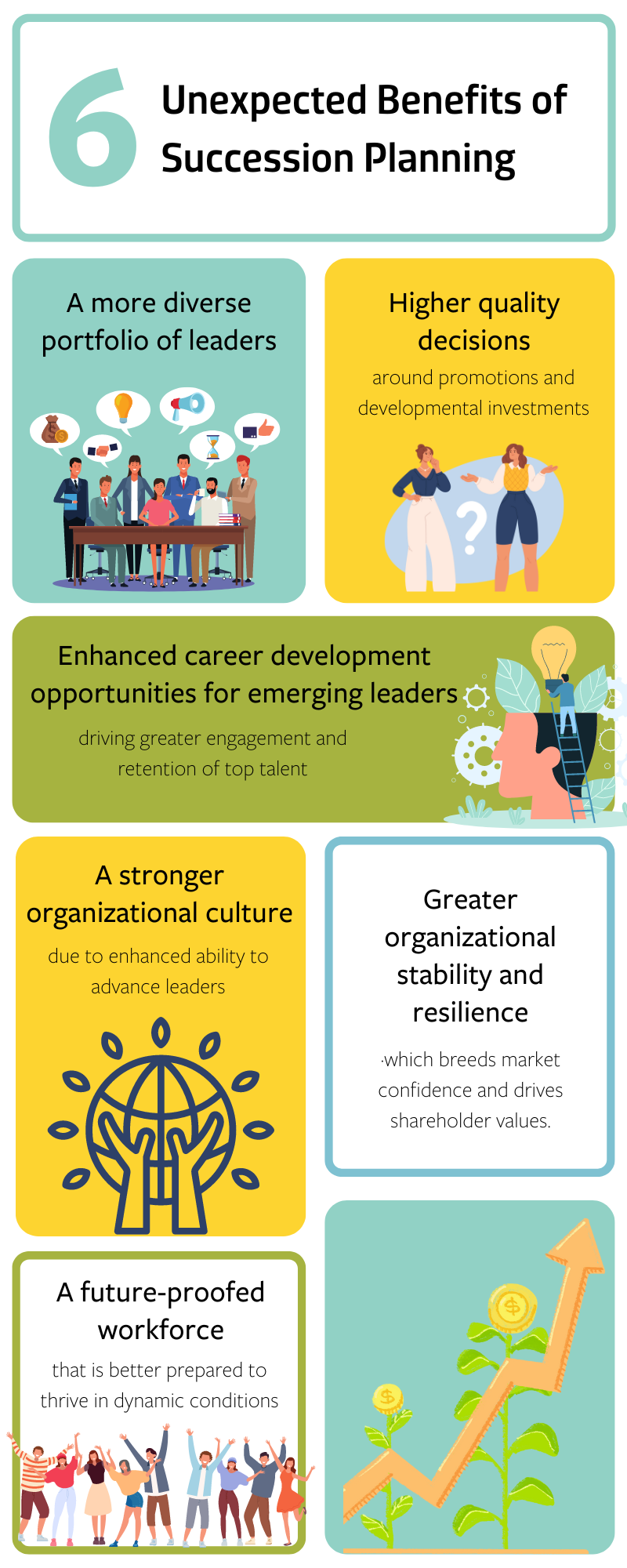
Photo by Eric Marin on Unsplash
Your 5-Step Guide to Succession Planning
If you’re like most CEOs, the thought of preparing your succession plan can feel like writing your last will. With the years of love, sweat, and tears you’ve poured into your company, the last thing you want is to plan for the day you’ll hand it over to someone else.
But the longer you ignore your pending succession, the harder it will be when the time comes to give you and your company the smooth transition you need and deserve. In fact, succession planning, when done right, can be an exceedingly positive step for you and your company. It can be a chance to reframe your identity, cement your legacy, and lay the groundwork to thrive wherever your next chapter takes you.
Over the years, Transcend has worked with many organizations to develop and execute strategic succession plans. We’ve taken note of the top pain points and fears that most leaders share about making the transition.
- Will my successor be the leader my company needs to succeed?
- Am I really ready to exit?
- Am I leaving my legacy to chance?
- Will other key leaders leave because I do?
Although it may feel overwhelming to turn the page, creating a solid plan will help to relieve any uncertainty that may be felt throughout the organization, pave a thoughtful path forward, and set the foundation for what’s next for both you and the company. A study by Deloitte found the following additional benefits to succession planning:

The Succession Planning Process
A proper succession plan should start at least one year prior to the anticipated exit. Ideally, you and your organization should begin planning two to three years in advance or even longer. The more time you allocate to the transition, the more comfortable you and other stakeholders will feel about the change.
If you’re planning to exit your company in the next few years, here are five critical points to account for as you craft your succession plan.
Develop a comprehensive business strategy
A comprehensive business strategy will help you codify the organization’s long-term vision, which in turn empowers you to properly assess and choose a successor. Knowing where the business is going in the future will set the cornerstone for the competencies and skillsets the new leader needs to possess for the next evolution of business.
Click here to learn more about how we can help you plan and activate a long-term strategy.
Your business strategy will also give you insight into whether your existing talent has the capabilities and competencies needed to make the future vision a reality. Developing your plan far in advance of your anticipated transition gives you ample time to evaluate strengths, identify talent gaps, and put strategies into motion so your organization is primed and ready to tackle the long-term vision with a new leader.
Map out the future structure of your organization
Once you have your long-range strategy in place, you’ll need to map out your org structure to align with future goals and initiatives. Leaving the names blank, map out the roles and hierarchy you’ll need to fulfill your five-year strategy. You may find this requires roles and talent that don’t exist in your current structure.
Download your FREE Key Role Analysis Workbook here to get started.
When you are confident the roles will align with your strategy, begin filling them in with people who are currently part of your org. What gaps are left? Create a hiring strategy around what needs to be filled, including timing and onboarding initiatives to ensure structure. Making a plan now for how to fill these roles gives your company a competitive edge and will help the successor with a more seamless transition.
Execute Strategic Talent Planning
Your current team will play a pivotal role in executing the succession plan, so take the time to identify each person’s strengths and how they can contribute to objectives along the way.
A Key Role Analysis will help you understand if you have the right people in place to meet the needs of the long-term strategy and new successor. It will break down each potential candidate’s skillset, along with the characteristics, expertise, and competencies you need to fulfill the future of each key role within your business. Taking this important step will guide role and leadership development plans and allow you to get any necessary new talent in place before the successor takes over.
A deep examination of your current talent will also help you assess how much time an internal candidate might need to be groomed for the role versus the cost of hiring someone from outside the company. When evaluating internal talent, measure them against the key characteristics you identified in your key role analysis, so that you can accurately assess if the candidate can be coached and developed to meet the needs of the role.
An established executive recruit-to-hire company such as HireBetter can prove to be a valuable partner in providing you with viable external options to fill in the gaps in your succession plan.
Create Leadership Development Plans for Filling Key Roles
Once you have mapped out the future organization and understand what key roles you will focus on for succession, it’s time to create leadership development plans that will upskill talent to be ready to fill those roles, deepening your bench strength. Candidates for successor, as well as candidates for other key strategic roles, will potentially need a range of different development opportunities to gain the skillsets and competencies that their new position will entail. These can include, but are not limited to, the following:
- One-on-one executive or leader coaching to upskill critical competencies targeted to each key role.
- Group leadership development programs to learn from others how to engage their teams and increase performance.
- Formal learning programs that provide certification for a specific set of skills needed to succeed.
- Exposure to different types of organizational tasks and projects through shadowing, stretch projects, apprenticeship, or mentoring.
Focus on Talent Retention
Any new leader, whether they are coming from inside or outside of the company, will create a big change for employees. This change will inevitably be hard for some, so you need to prepare a plan to ensure top talent will stick around while the dust settles. Incentives for leaders who were in the running for successor but not promoted, as well as leadership and employee development programs for all, can help talent remain engaged and motivated through change.
Remember to keep your intentions set in the future. When you’ve transitioned out of your role, you’ll want the peace of mind in knowing you not only laid the path for your successor, but you’ve provided a way forward for the rest of your team to meet their individual goals.
Lean On Your Executive Coach To Guide You Through Succession
The role of a leadership development firm like Transcend in the succession process is to keep everyone focused on the company’s vision, cement your legacy, and prepare the organization for a smooth transition when you are ready. We will help you build a long-range strategy and succession plan connected to the future organization and help you implement it, readying you and your company for your exit.
Our team is prepared to guide you through your tailored succession process, support you in figuring out the next evolution of your life after exit, coach and upskill your top internal candidates, and onboard potential external successors to fill critical roles.
Perhaps most importantly, we will empower you to set the organization on a path that is prepared to thrive well into the future. Years from now when you look back on your legacy, you’ll feel confident that you left the company more capable and ready to forge a future of performance that was inspired by you, not reliant on you.


